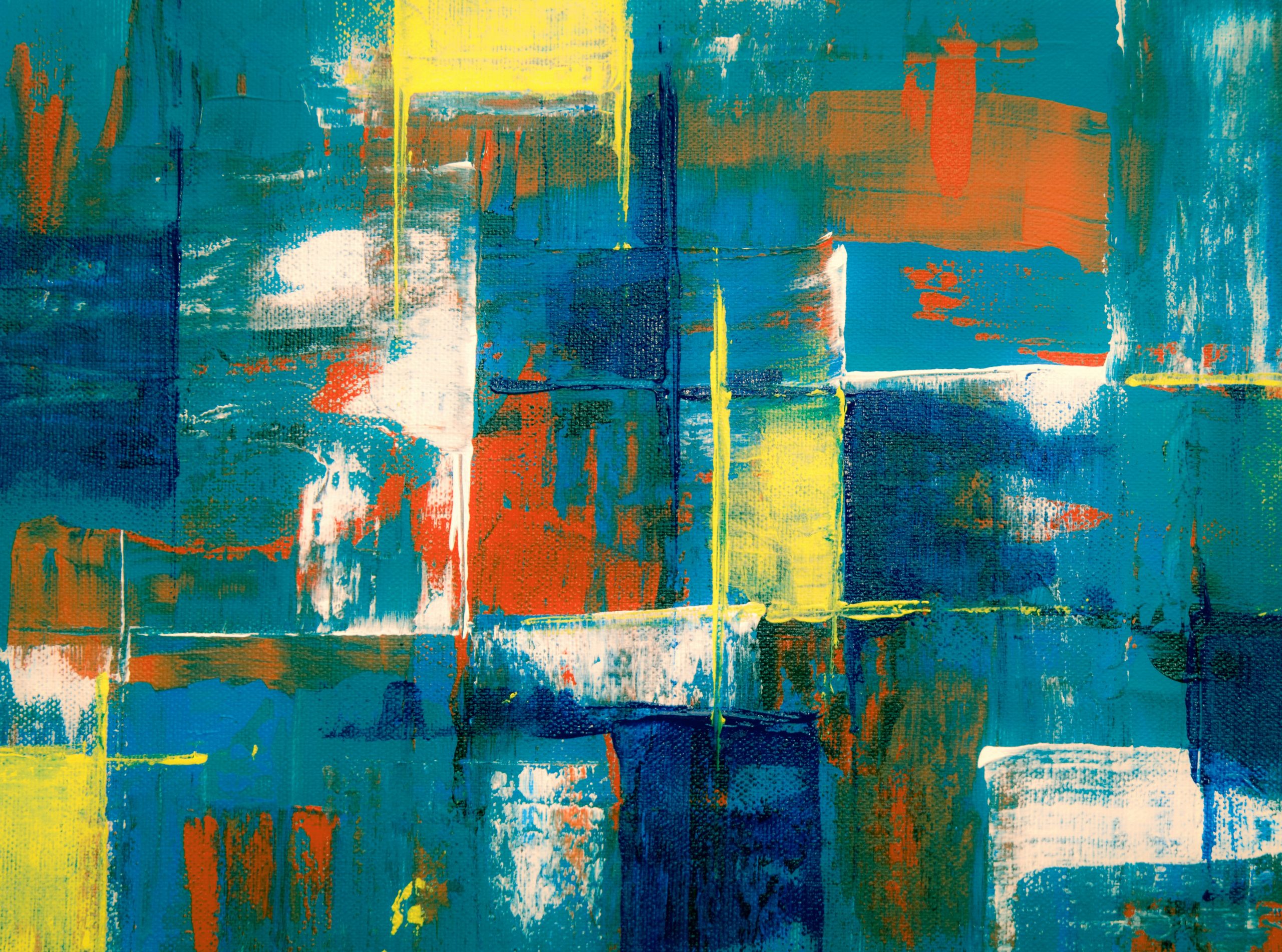What Is the Legend of the Banshee?

Before diving in, please note: This post is for informational purposes only. If you’d like to know more about how we approach topics, feel free to check out our friendly Disclaimer Page.
Hey there, amazing readers! 🖐️ Just a quick note: yes, we know there are a lot of ads here. Trust us, we get it—it’s not the prettiest look, but they help us keep this blog alive and kicking. Those pesky little ads cover the costs of all the behind-the-scenes magic, from hosting and tech stuff to creating content we hope you’ll love.
We’re committed to delivering quality posts, and your support (even just sticking around despite the ads) means everything to us. So, bear with us, and thanks for helping us keep the good vibes rolling. Now, on to the fun stuff! 😉
TRANSLATE BUTTON AT THE END OF THE ARTICLE
A Quick Overview
If you’re diving into the lush, green landscapes of Ireland’s folklore, you’re bound to encounter the captivating legend of the Banshee.
This ghostly figure, often depicted as a wailing woman, has captivated hearts and minds for centuries.
But there’s more to her tale than just a chilling scream in the night.
Let’s unravel the fascinating layers surrounding the Banshee — from her origins to her role in modern culture.
What Is the Banshee? An Introduction to the Legend
The Banshee, or "Bean Sidhe" in Irish, translates to "woman of the fairy mound." This ethereal being is known for her haunting cry, which serves as a harbinger of death.
Many believe that her wail signals the impending demise of a family member.
It’s vital to note that the Banshee is not malevolent; rather, she is seen as a protective figure, mourning for the souls of the departed.
In Irish culture, her presence has been both feared and revered.
Families often tell tales of her visits, especially in times of grief.
While she may seem like a scary specter, there’s a softer side to her story.
She embodies the deep connection between the living and the dead, an age-old theme in human experience.
The Banshee typically appears at night, often around the home of someone who is about to pass away.
Although fear is a common reaction to her wail, many view it as a reminder to cherish life and family bonds.
Isn’t it interesting how fear can coexist with fondness in folklore?
The Origins of the Banshee: A Glimpse into Irish Folklore
The origins of the Banshee can be traced back to ancient Irish mythology.
Various tales describe her as a fairy woman, linked to the Tuatha Dé Danann, a mythical race of deities in Irish lore.
These beings were believed to have supernatural powers, and the Banshee was seen as their messenger.
Some legends suggest that the Banshee manifests from the spirits of women who died tragically, especially those related to a family line.
These women could have been wronged in life, often linked to themes of betrayal or loss.
It’s this sense of unfinished business that gives the Banshee her eerie presence.
Interestingly, the Banshee is often associated with specific families, particularly those of noble blood.
The legend holds that she appears primarily to those with an ancestral connection to her.
This familial aspect adds depth to her tale, as it intertwines with themes of lineage and heritage.
In the early texts, the Banshee was often depicted as a benign figure, offering comfort in sorrow.
Over time, her image has evolved, influenced by societal changes and the Catholic Church’s integration into Irish life.
Today, she exists in a blend of fear and respect, showcasing the complexity of folklore.
The Banshee’s Appearance: A Blend of Beauty and Fear
The Banshee’s appearance is as diverse as the tales told about her.
She is frequently described as a beautiful woman with long, flowing hair, often dressed in a white or gray gown.
This ethereal beauty can be both captivating and unsettling.
The juxtaposition of her stunning looks and the ominous nature of her cry creates a powerful image.
In some tales, the Banshee has been depicted as an old hag, her features twisted by sorrow.
This version emphasizes the toll of mourning, suggesting that her beauty fades with each life she witnesses passing.
The physical transformation mirrors the emotional weight she carries, making her stories resonate deeply.
Many versions of the Banshee include a sense of the supernatural.
Some believe she can shapeshift into animals such as a crow or a stoat, symbolizing death and change.
These variations enrich her character, making her a multifaceted figure in Irish mythology.
In artwork and literature, artists have often portrayed the Banshee as a sorrowful figure, weeping beside graves or hovering near the homes of the afflicted.
This imagery evokes a blend of beauty and sorrow, compelling us to reflect on our mortality and the bonds we share with loved ones.
The Banshee’s Wail: What Does It Really Mean?
The wail of the Banshee is perhaps her most defining characteristic.
It is said to be a high-pitched, mournful sound that can chill even the bravest of hearts.
This cry serves as an ominous sign, warning families of impending loss.
Yet, the wail is not just a noise; it carries profound meaning.
Many describe the Banshee’s wail as a sound filled with sorrow and lamentation.
It reverberates through the night like a haunting melody, making it unforgettable.
The emotional weight of the wail connects the living to the dead, creating a powerful moment of introspection.
In some stories, the wail changes depending on the family’s history.
Those with a legacy of sorrow might hear a more intense, heart-wrenching cry.
For others, it may be a softer sound, indicating a more peaceful passing.
This personalization of the wail adds a layer of intimacy to the legend, implying that the Banshee is intimately familiar with the families she watches over.
The legend also suggests that the Banshee’s wail can be heard only by those with a strong connection to the person who is about to die.
This idea emphasizes the bond between the living and the departed, reinforcing the notion that our loved ones never truly leave us.
It’s hard not to feel a sense of empathy for the Banshee herself.
After all, she carries the burden of mourning for those who have passed while serving as a reminder to cherish our time with one another.
Famous Banshee Tales: Stories from Irish Legends
Throughout Irish folklore, tales of the Banshee are rich and varied.
One famous story speaks of a woman named Aine, whose tragic death left her family heartbroken.
According to legend, Aine’s Banshee appeared, wailing at the gates of her home, warning her loved ones of the sorrow to come.
The family, deeply connected to their ancestral roots, felt a profound sense of loss.
Another well-known tale involves the O’Grady clan.
The Banshee was said to appear regularly to warn them of deaths within the family.
Each time she wailed, the family would prepare themselves for the inevitable sadness that followed.
The O’Gradys embraced her presence, viewing her as a part of their heritage.
In some folklore, the wail of the Banshee is said to be so powerful that it could shatter glass or darken the skies.
This dramatic element adds intensity to her cry, making it seem as though nature itself reacts to her mourning.
Moreover, the Banshee is often associated with specific locations in Ireland.
Some places are thought to be haunted by her presence, where locals report hearing her wail.
This link to geography deepens the connection between the Banshee, the land, and its people.
These stories are not just mere tales; they reflect the values of community and family central to Irish culture.
They remind us that even in death, love and connection endure, transcending the boundaries of life.
The Banshee in Modern Culture: Movies and Literature
The Banshee has made her mark not only in folklore but also in modern media.
From movies to literature, her haunting presence continues to captivate audiences.
Various films explore themes of loss, family, and the supernatural, often drawing inspiration from her legend.
In recent years, the Banshee has appeared in popular television series, often portrayed as a tragic figure caught between worlds.
These adaptations highlight her sorrow while adding twists that engage contemporary audiences.
Shows like "Supernatural" and "Shadowhunters" have included references to the Banshee, bringing her story to new generations.
Literature has also embraced the Banshee.
Authors weave her into their narratives, exploring themes of grief, love, and legacy.
Books often depict her as a complex character, allowing readers to empathize with her sorrow and experience the emotional depth of her tale.
The Banshee has also found her way into video games, where players might encounter her as a formidable spirit.
This interaction invites players to confront their fears and engage with the legends from a fresh perspective.
Moreover, the Banshee’s influence extends to music, with some artists drawing from her mythos.
They capture her essence in haunting melodies and lyrics that echo her wail, evoking feelings of nostalgia and longing.
As the Banshee continues to inspire various forms of media, she remains a symbol of connection between the past and present.
Her legend is alive and well, reminding us of the power of storytelling in shaping our understanding of life and death.
The Symbolism of the Banshee: More Than Just a Ghost
The Banshee represents much more than just a spectral figure.
She embodies themes of loss, mourning, and the passage of time.
Her presence serves as a reminder of our mortality, urging us to appreciate the fleeting nature of life.
In many ways, the Banshee symbolizes the enduring bond between families.
Her wail connects generations, reminding us of the love that persists even after death.
This connection can be seen in how families honor their ancestors, keeping their memory alive through stories and traditions.
Furthermore, the Banshee stands as a feminist symbol in some interpretations.
She is often seen as a guardian of women’s experiences, mourning the injustices they faced in life.
Her presence can be viewed as a reclaiming of power, allowing women to assert their voices in a world that often silences them.
The duality of beauty and fear in the Banshee’s character also reflects the complexities of grief.
Mourning is not a linear experience; it can bring both sorrow and a deep appreciation for life.
The Banshee encapsulates this duality, reminding us that love and loss are intertwined.
In essence, the Banshee serves as a cultural touchstone, representing the values and beliefs of Irish society.
Her legend is a reminder of the importance of family, memory, and the shared human experience of navigating life and death.
Banshee vs. Other Spirits: How It Stands Out
When comparing the Banshee to other supernatural entities, her uniqueness becomes apparent.
Unlike many ghosts who haunt for vengeance, the Banshee is primarily a messenger of grief.
Her role is not to instill fear but to honor the dead and provide comfort to the living.
Spirit figures from various cultures typically embody specific attributes.
For example, the Grim Reaper is often associated with death as an inevitability, while the Banshee serves as a personal herald, directly connected to families.
This personalized approach adds depth to her character, making her more relatable.
Furthermore, the Banshee’s cultural significance offers a unique insight into Irish heritage.
While other spirits may fade into general folklore, the Banshee remains a celebrated figure within Irish identity.
Her stories are shared at gatherings, ensuring that her legacy endures.
In addition, the emotional resonance of the Banshee differentiates her from other spirits.
While many spirits are depicted as frightening, the Banshee evokes empathy.
Her wail is not one of rage; it’s a cry of sorrow, reminding us of the fragility of life.
Ultimately, the Banshee stands out as a complex character who embodies the intricacies of human emotion.
Her legend invites us to reflect on our own relationships with loss and love, reminding us that while death is a part of life, it is not the end.
How to Spot a Banshee: Signs and Omens to Know
So, how might one recognize the presence of a Banshee?
While tales vary, there are some classic signs to be aware of.
Keep your ears perked up, as the most common indicator is, of course, her wailing.
If you hear a mournful cry echoing through the night, it might just be the Banshee paying a visit.
Other signs can include:
Changes in animals: Some stories suggest that animals, especially dogs, may act strangely when the Banshee is near, often showing signs of distress.
A sudden chill: Many claim that a sudden drop in temperature can accompany her presence, creating an eerie atmosphere.
Dreams of the deceased: If you dream of a loved one who has passed and feel a connection to the Banshee, it could signify her presence.
Visions of a woman in white: Many describe seeing a figure in white or gray, often near the home of someone who is ill.
These signs serve as gentle reminders to pay attention to the emotional currents around us.
While you might not want to actively seek out the Banshee, remaining aware of your surroundings can enhance your connection to your heritage.
The Banshee’s Role in Family Heritage and Ancestry
The Banshee plays a significant role in family lineage within Irish culture.
She acts as a guardian of ancestral stories, reminding families of their shared history.
Each family connected to her carries unique tales, intertwining their personal experiences with the broader tapestry of Irish folklore.
In many communities, honoring the Banshee is akin to honoring one’s ancestors.
When families gather to share stories, they often include tales of the Banshee, keeping her memory alive.
This practice fosters a sense of belonging and connection to the past.
Additionally, the Banshee serves as a reminder of the importance of family ties.
Her presence in the stories signifies the deep bonds between generations, reinforcing the idea that those we lose never truly leave us.
They remain part of our heritage, influencing our lives and choices.
Visiting ancestral lands can evoke a sense of the Banshee’s presence.
Many people report feeling a connection to their roots in these spaces, making it easier to believe in the stories passed down through generations.
This connection to place and lineage adds depth to the understanding of the Banshee’s role.
Ultimately, the Banshee embodies the essence of family, memory, and heritage.
She serves as a bridge between the past and present, reminding us that our stories are intertwined with those who came before us.
Celebrating the Banshee: Festivals and Cultural Events
Although the Banshee may have an ominous reputation, she is celebrated in various cultural events throughout Ireland.
Festivals dedicated to Irish folklore often include tales of the Banshee, highlighting her significance in the cultural landscape.
One such event is the annual Banshee Festival, held in various towns across Ireland.
These festivals often feature storytelling sessions, where local storytellers share their versions of the Banshee legend.
Participants come together to celebrate their culture, embracing the stories that connect them to their ancestors.
Certain regions also host Banshee-themed gatherings around Halloween, where people recount eerie tales, emphasizing the spirit’s role in honoring the deceased.
These gatherings foster a sense of community and provide an opportunity for reflection on life and loss.
Moreover, traditional music often accompanies these celebrations.
Many musicians compose songs inspired by the Banshee, capturing her haunting essence in melody.
This musical tradition keeps her spirit alive, allowing new generations to engage with her legend.
In addition to festivals, schools and cultural organizations often organize workshops that explore Irish folklore, including the Banshee’s tale.
These educational activities help children connect with their cultural heritage and understand the deeper meanings behind the stories.
Celebrating the Banshee in these ways allows communities to honor their past while looking toward the future.
By embracing this ghostly figure, they weave together the threads of history, memory, and identity.
Embracing the Legend: Why the Banshee Captivates Us
The Banshee’s story captivates us for many reasons.
She embodies the universal themes of love, loss, and connection, resonating deeply within our own experiences.
Her legend reminds us of the ties that bind us to our families, even in moments of grief.
There’s a certain comfort to be found in her presence.
While the Banshee may evoke fear, she also serves as a gentle reminder to appreciate our loved ones.
Her wail, though mournful, can inspire us to cherish each moment spent with family and friends.
Furthermore, the Banshee’s complexity invites us to explore our emotions.
In a world that often shies away from discussions about death, she encourages openness and vulnerability.
By embracing her story, we learn to navigate the complexities of human experience and embrace our shared humanity.
Her captivating legend also serves as a lens through which we can explore our culture.
The Banshee represents the rich tapestry of Irish folklore, inviting us to delve into the stories that shape our identity.
As we share her tales, we participate in a centuries-old tradition that keeps our heritage alive.
In conclusion, the Banshee is more than just a ghost; she’s a symbol of love, loss, and the bonds that connect us all.
Her story invites us to reflect on our relationships, embrace our heritage, and celebrate the beauty of life, even in the face of death.
The Banshee captivates us, reminding us that while life is fleeting, our connections endure, forever echoing in the hearts of those left behind.
Conclusion
The legend of the Banshee is rich with meaning and emotion.
From her haunting wail to her role in family heritage, she captivates and compels us to reflect on our lives.
As we navigate our own experiences of loss and love, the Banshee serves as a poignant reminder of the connections that make us human.
Whether through stories, festivals, or personal reflections, embracing the Banshee allows us to honor the past while cherishing the present.
So next time you hear a soft wail in the night, take a moment to appreciate the love and legacy that surrounds you.

The Enlightenment Journey is a remarkable collection of writings authored by a distinguished group of experts in the fields of spirituality, new age, and esoteric knowledge.
This anthology features a diverse assembly of well-experienced authors who bring their profound insights and credible perspectives to the forefront.
Each contributor possesses a wealth of knowledge and wisdom, making them authorities in their respective domains.
Together, they offer readers a transformative journey into the realms of spiritual growth, self-discovery, and esoteric enlightenment.
The Enlightenment Journey is a testament to the collective expertise of these luminaries, providing readers with a rich tapestry of ideas and information to illuminate their spiritual path.
Our Diverse Expertise 🌟
While our primary focus is on spirituality and esotericism, we are equally passionate about exploring a wide range of other topics and niches 🌍📚. Our experienced team is dedicated to delivering high-quality, informative content across various subjects ✨.
To ensure we provide the most accurate and valuable insights, we collaborate with trusted experts in their respective domains 🧑🏫👩🏫. This allows us to offer well-rounded perspectives and knowledge to our readers.
Our blog originally focused on spirituality and metaphysics, but we’ve since expanded to cover a wide range of niches. Don’t worry—we continue to publish a lot of articles on spirituality! Frequently visit our blog to explore our diverse content and stay tuned for more insightful reads.





